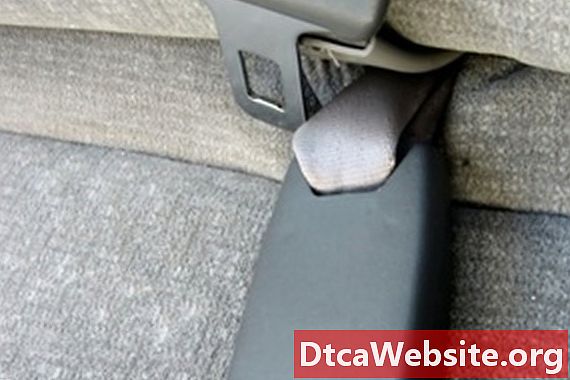
Contenu
Maintaining the correct air pressure in your cars tires not only increases your safety on the road, but improves the cars gas mileage. The correct air pressure for a tire is written on the side of the tire and listed as a number of pounds per square inch (PSI). Once you have located that number, you can take your car to check the tire pressure at a gas station.
Step 1
Go to a gas station that has an air machine for filling tires. They are usually located outside and look like small boxes with long, black hoses attached to them (sometimes they are marked Air). Pull your car up to the machine so the machine is centered on your car. This way, the air hose is sure to reach all of your tires.
Step 2
Pick one tire to start with and locate the PSI label on the tire. It will be written on the side of the tire: Find the numbers or letters of the brand of tire and at the end of that label, typically given in a parentheses. For example, the side of a tire may read: PR300345 All Weather (30-45 PSI). This tire requires between 30-45 PSI to operate safely.
Step 3
Remove the tire air stem cap. The air stem is a black stem that will be protruding through your rim, with a screw-on cap.
Step 4
Pull the air hose over to the tire. Most air hoses have a trigger assembly on the end. The tip will fit over the end of the air stem. Press the tip down firmly on the stem for two seconds, and the built in pressure gauge on the top of the trigger assembly will extend a pressure reading bar. Pull the tip of the air hose off the air stem. If the air hose does not have a trigger assembly, purchase a tire gauge from the gas station or from an auto supply store. Press the tip of the gauge over the stem and the pressure bar will extend out the back. Remove the gauge.
Step 5
Read the pressure bar to see the current PSI level in your tire. The pressure bar is marked with a series of lines and numbers. Most pressure bars use lines to indicate two pounds of pressure in-between whole numbers. For example, there will be four lines at the very tip of the bar and then the number 10; then four more lines and the number 20, etc. The point where the pressure bar has stopped extending from the case indicates the number you should read to determine the PSI level in your tire.
Add air, if necessary, by pressing the tip of the air hose down on the air stem and holding the trigger in. Wait a few moments, release the trigger and remove the air hose. Check the tire pressure again. Make sure you have pushed the pressure bar back in before beginning the process, or your reading will not be accurate. Repeat until you have the correct PSI level in your tire.
Tip
- If you cant locate the PSI range on the side of the tire, look for a placard that will be mounted either on the drivers side door jamb, in the glove box or under the engine hood. All cars made after 1968 are required to have a placard that lists the details of the vehicle, including the PSI range for the tires.
Warning
- Do not drive on under-inflated or over-inflated tires. Both instances greatly increase your chances of an accident through tire failure or loss of steering control.
Items you will need
- Gas station with air compressor
- Tire pressure gauge


